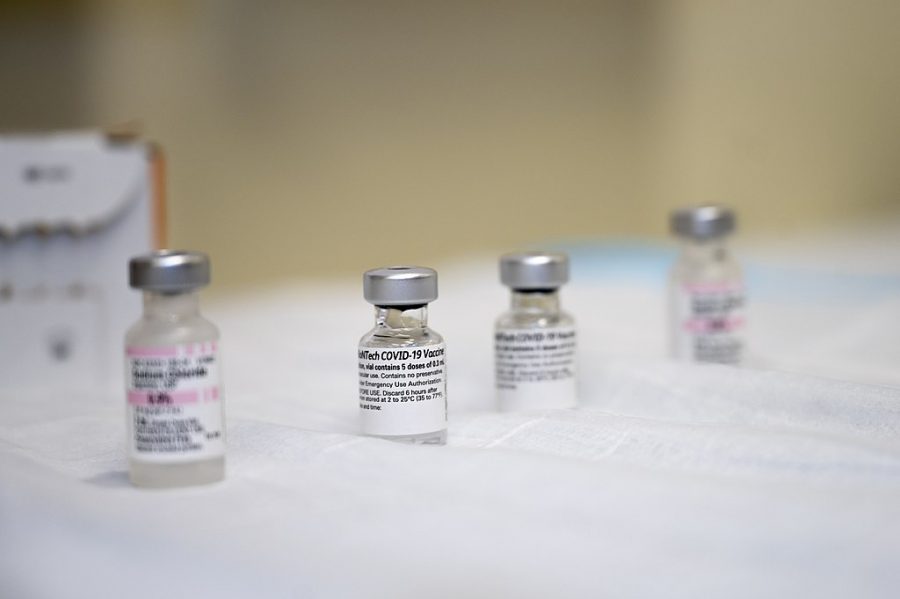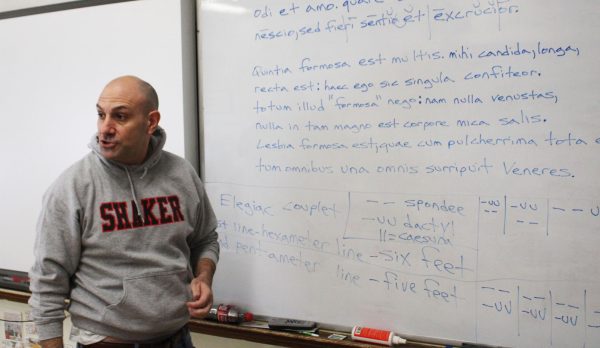Vaccine Side Effects Prompt Remote Instruction Day
More than half of teachers report significant side effects of second shot, causing staffing shortage
The district made yesterday a day of synchronous, remote learning after staff members reported lasting side effects of the second dose of the Pfizer vaccine received March 9.
On Feb. 12, the district announced that there would be no classes March 9 to allow teachers and staff to receive their second vaccinations as well as remote, synchronous learning on March 10 to account for the possible side effects. The District then revised the schedule for Feb. 24, writing that there would be asynchronous, remote learning from 8 a.m. to 12 p.m. March 9, and synchronous, remote learning for the afternoon, followed by no school on March 10.
Teachers received both shots at the Educational Service Center of Northeast Ohio building in Independence. The first vaccinations occurred Feb. 16, which was an already-scheduled day off of school.
Students and teachers were expected to return to classes onsite and online yesterday. However, in an email sent to students and families at 9:35 p.m. Wednesday, the district announced that all Woodbury, middle school and high school students would attend school remotely yesterday because “faculty are still experiencing side effects from their second doses of COVID-19 vaccine, which has resulted in staffing shortages for tomorrow.”
Dr. John Morris, SHTA president and high school English teacher, said that he experienced some soreness from the first dose, but more severe side effects from the second dose. “The second shot left me with the same muscle soreness, but this time I also had a low-grade fever, muscle cramping, headache and fatigue,” Morris wrote in an email.
Morris supports the district’s decision to move to a remote schedule yesterday, estimating that more than half of teachers were still experiencing the vaccine’s side effects. “Being onsite may have forced many teachers to call completely off. This way teachers can recover from home and either provide asynchronous content if their symptoms are more severe and synchronous if they are still recovering from milder symptoms,” he wrote.
He also wrote that teachers were singled out for vaccination because of a federal push to resume onsite learning in schools across the country, some of which have been operating remotely or in a hybrid model for a year now. “Teachers received vaccinations as part of President Biden’s efforts to re-open schools within his first 100 days,” Morris wrote.
Currently, Ohio has extended vaccinations to residents age 50 and older.
Significant side effects don’t come as a surprise. Reports of one or two days of flu-like symptoms have circulated as health care workers, who were the first to be vaccinated, received their second doses.
Science teacher Travis Cox said that he had no issues with his first dose but did have side effects after the second shot. “I got a bad headache within a few hours of getting the vaccine. Then the second day I had a sore arm, and my lymph nodes in my armpit swelled up and made it very sore under my arm.”
The Centers for Disease Control states that the vaccine causes several common side effects, but most people only experience mild to moderate reactions. Local side effects include pain, redness and swelling in the arm that received the shot.
Some people experience more severe symptoms. “Most systemic post-vaccination symptoms are mild to moderate in severity, occur within the first three days of vaccination, and resolve within 1–3 days of onset. Overall, symptoms are more frequent and severe following the second dose and among younger people compared with older people,” according to the CDC.
Two shots are necessary to achieve the vaccine’s maximum effect. Dr. William Petri, a professor at the University of Virginia, writes that the first dose of the vaccine doesn’t provide a strong enough immune response to COVID-19. “The first dose primes the immune system and introduces the body to the germ of interest. This allows the immune system to prepare its defense.
“The second dose, or booster, provides the opportunity for the immune system to ramp up the quality and quantity of the antibodies used to fight the virus.”
For the Pfizer and Moderna COVID-19 vaccines, both of which require two doses, the second boosts the efficacy from 60 percent to nearly 95 percent.
Having side effects does not mean the vaccine has made people sick. People experience side effects because a vaccine is an imitation of the infection. “Such minor symptoms are normal and should be expected as the body builds immunity,” according to the CDC.
An inflammation and immunity specialist from Cleveland Clinic Hospitals states that although side effects from the vaccine prove that your immune system is working, not showing side effects does not mean the vaccine is not working and won’t protect you. During trials, half or more of people who received vaccination did not report side effects but were still 94 percent protected.
“I think the side effects of this vaccine are an example of how prepared our bodies need to be to fight this virus,” said Morris. “Teachers are grateful for the vaccine and know the cost is worth it for our students, families and community.”
Comment using your Facebook, Yahoo, AOL or Hotmail account














